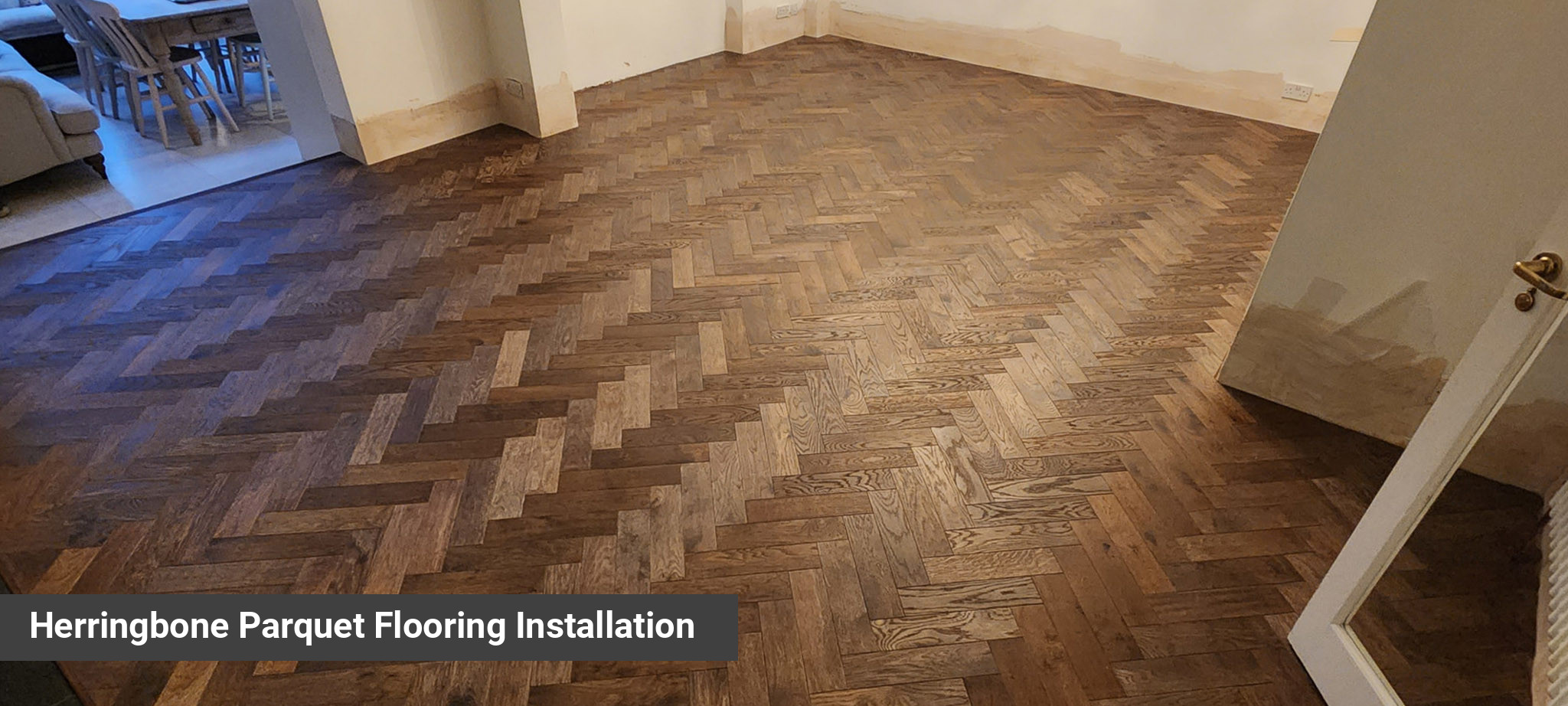If you're considering herringbone flooring for your home, you've likely come across different installation methods, such as glue-down and floating. For someone new to flooring, understanding the differences may be confusing, but in this article we will help you make the best choice for your space. We'll explore why the glue-down method is generally the preferred option for herringbone flooring over the floating method.
What is Herringbone Flooring?

Herringbone parquet flooring pattern refers to a type of wood floor design where the planks are laid out in a zigzag pattern, resembling the bones of a fish—hence the name "herringbone."
Herringbone timber parquet flooring is available in solid wood and engineered wood flooring, with tongue-and-groove or click connection. It is a pattern that combines larger and smaller number of pieces, compared to any other type of flooring and therefore the level of the subfloor and the bonding to the subfloor is important.
Please note, click system herringbone products are relatively larger pieces - usually between 110-130 mm wide and between 650 - 725 mm long. These product are not suitable for standard hallways and smaller spaces. For flooring products advice call on 02038838044.
Understanding the Difference between Glue-Down and Floating Installations
Before diving into the benefits of glue-down installation, it’s important to understand the two methods.
In the glue-down method, the flooring planks are adhered directly to the subfloor using a strong adhesive. This creates a permanent bond between the floor and the subfloor.
With floating installation, the planks are not attached to the subfloor. Instead, they are laid over the subfloor with an underlay, with the planks being clicked or locked together at the edges.
Why Glue-down is the Preferred Choice?
While both glue-down and floating methods have their place in flooring installations, the glue-down method is generally the better option for any parquet flooring installation.
Although, all tongue-and-groove (T&G) flooring products are installed using the glue-down method, many flooring products with a click system are often advertised as suitable for floating installations. However, these products can be sensitive to the subfloor's level, imperfect factory cutting, uneven spots, and even the softness created by the underlay. This can lead to squeaking noises after installation.
At Floorworks we recommend glue-down installation for T&G and click system herringbone flooring products.
One of the most significant advantages of the glue-down method is the enhanced stability it provides because each plank is securely glued to the subfloor, meaning there is minimal movement. In contrast, floating floors, while convenient, can have slight movement because they aren't permanently attached to the subfloor.
The Herringbone pattern is complex and requires precision. The glue-down method offers more control during installation, allowing for meticulous placement of each plank. Floating floors may not offer the same level of control, making it harder to maintain the integrity of the herringbone pattern
Another advantage of the glue-down method is that it tends to have a longer life span. For a pattern as timeless as herringbone, you’ll want your flooring to last for many years. Glue-down installations provide that longevity, ensuring that your floor remains beautiful and functional for the long term. The firm attachment to the subfloor reduces wear and tear on the joints between the planks, which is a common issue with floating floors.
In essence, glue-down installation is the best choice for herringbone flooring because it ensures the pattern stays perfectly aligned and secure. This method minimises movement and squeaking, leading to a more durable finish.
With glue-down, your herringbone floor will maintain its stylish look and feel solid for years to come.








